Leaf blotch disease, caused by Zythia fragariae, is a very minor foliar disease of strawberry in California. Usually the disease occurs in late winter/early spring when there are sufficient rains to activate the fungus and spread the spores. Once the winter season rains have ceased, the disease subsides before the development of much fruit. Because of the drought, leaf blotch was generally not observed or reported during the late winter/early spring of this season.
However, an unusual flare-up of leaf blotch is currently developing in some fields in the central coast. Because of the lack of rainfall and build up of salts in the soil, some growers used sprinklers in the early spring to alleviate salt buildup and reduce subsequent stress of the strawberry transplants. It appears that in some cases, the sprinkler irrigations have enabled Zythia to develop and cause typical leaf blotches. Symptoms consist of tan to gray leaf lesions that commonly (though not exclusively) develop along the margin or edge of the leaflets (Photo 1). Leaf blotches are irregular in shape and may be surrounded by a purple border. These affected areas tend to grow fairly large; they can expand and cover from 1/4 to 1/2 of the leaflet surface. A key diagnostic feature of leaf blotch is the presence of tiny, brown to black, fungal fruiting bodies in the gray blotches (Photos 2 and 3). These fruiting bodies produce tiny spores (Photo 4) that are readily spread by splashing water.
A related development is the formation of brown to tan lesions on the calyx tissue of strawberry fruit (Photo 5). Calyx lesions appear to be associated with plants having the leaf symptoms. In some cases, the Zythia fruiting bodies are present in the calyx lesions and appear as darker brown, circular to oblong structures (Photo 6). However, fruiting bodies are not always present; since there are other physiological or environmental factors that can result in damage to fruit calices, care should be taken when diagnosing this problem.
UC Cooperative Extension does not have efficacy data for fungicide use for leaf blotch; therefore, we do not recommend or suggest the use of fungicides. Researchers in other areas (Europe) have determined that the following materials have good effectiveness against the leaf blotch pathogen: Pristine, Quadris, Rally. Switch also reduced disease but was less effective. This April occurrence of leaf blotch following sprinkler irrigations is a good reminder of how environmental conditions are essential for the development of plant diseases. This leaf blotch situation may continue to be present if any late April rains fall.
There are fungicides mentioned for management of leaf blotch disease in this article. As always, before using any of these products, check with your local Agricultural Commissioner's Office and consult product labels for current status of product registration, restrictions, and use information.
Attached Images:
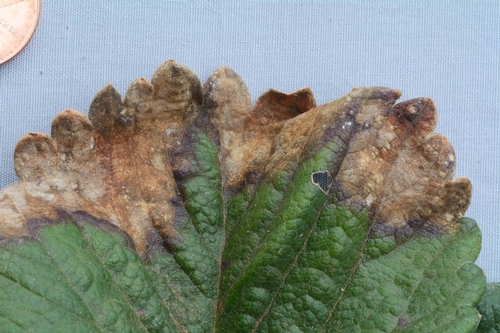
Photo 1. Leaf blotch is characterized by irregularly shaped, gray to brown leaf lesions. Photo: Steven Koike, UCCE.
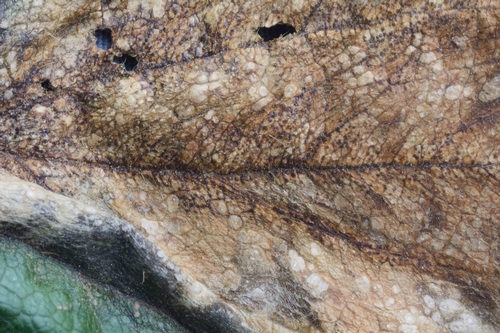
Photo 2. Fungal fruiting bodies are usually present in the leaf blotch lesions. Photo: Steven Koike, UCCE.
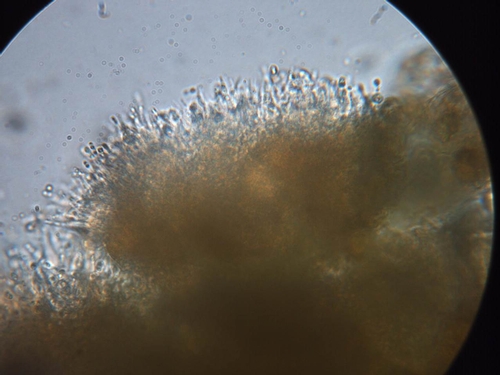
Photo 3. Close up photograph of a portion of the Zythia fruiting body; each upright spike produces an infective spore. Photo: Steven Koike, UCCE.
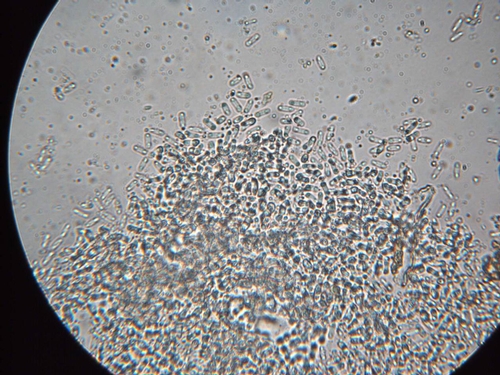
Photo 4. Zythia produces tiny spores that are spread by splashing water. Photo: Steven Koike, UCCE.
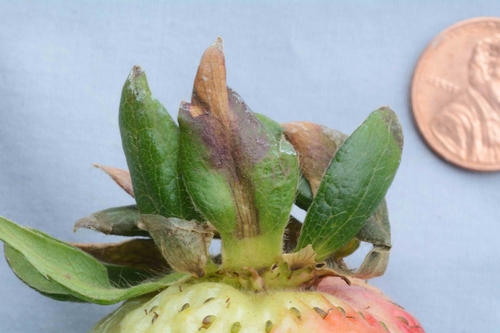
Photo 5. In some cases, it appears that Zythia is causing lesions on fruit calyx tissue. Photo: Steven Koike, UCCE.
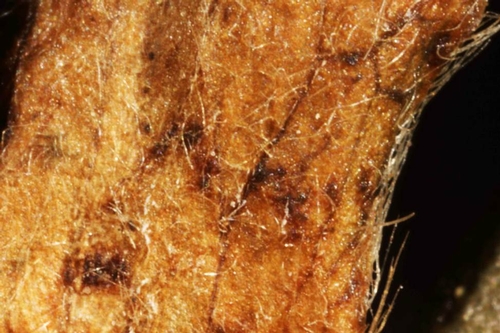
Photo 6. Fruiting bodies in strawberry calyx tissues confirm the presence of Zythia. Photo: Steven Koike, UCCE.